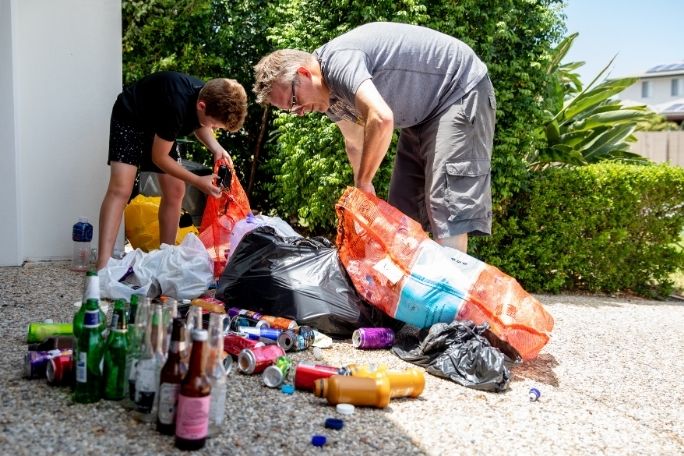Lesson summary
In this lesson, students will explore the topic of recycling within their classroom. Through the topic they will practise the core mathematical skills of counting, sorting and classifying and then apply their findings to reflect on and develop their own recycling habits.
Learning intentions:
Students will...
- understand that paper, cardboard, plastic, glass, aluminium and steel can be recycled
- will able to sort materials into groups
Success criteria:
Students can...
- recall five main recycling categories (paper and cardboard, steel, aluminium, plastic and glass)
- group items into recycling categories
Lesson guides and printables
Lesson details
Curriculum mapping
To view our Australian Curriculum alignment click here
To view our NZ Curriculum alignment click here.
Unit of work: Visy Education – Primary Mathematics.
Time required: 50 mins.
Level of teacher scaffolding: High – explicit modelling, demonstration and monitoring of student activities required.
Resources required
- Student Worksheet (printed, one per student)
- Device capable of presenting a video to the class
- Types of Bins Display
- Classroom bins
- Recycling Guidelines poster – Australian version (printed, one per each group of three)
- Recycling Guidelines poster – New Zealand version (printed, one per each group of three)
- Examples of recyclable materials for students to sort (one collection for each group of three students), e.g. old food boxes, milk cartons, empty cans, used paper etc (ensure all items that will be sorted by students are clean and free from cracks or sharp edges so that they are safe for them to handle)
- Six buckets/tubs for each type of recycling (label each bin with the recycling category – see Recycling Guidelines poster)
- One pair of tongs
Skills
This lesson is designed to build students’ competencies in the following skills:
- Collaboration
- Communication
- Community engagement
- Ethical understanding
- Global citizenship
- Leadership
Additional info
This lesson has been developed in partnership with Visy. For over 70 years Visy has been committed to finding sustainable solutions for Australia and New Zealand’s recyclables and helping to reduce local landfills. Visy collects, receives and sorts paper, cardboard, glass, plastics, steel and aluminium from households, businesses and schools with the purpose of reusing these products in the re-manufacture of new packaging products.


Welcome back!
Don't have an account yet?
Log in with:
By signing up to Cool.org you consent and agree to Cool's privacy policy to
store, manage and process your personal information. To read more, please see
our privacy policy here(Opens in new tab).
Create your free Cool.org account.
Many of our resources are free, with an option to upgrade to Cool+ for premium content.
Already have an account?
Sign up with:
By signing up to Cool.org you consent and agree to Cool's privacy policy to
store, manage and process your personal information. To read more, please see
our privacy policy here(Opens in new tab).